Some time ago, in my post “From Mistrel to Heretic”,1 I wrote about my journey to digital independence. I received several questions about my tech stack afterwards. A fair question I’m happy and willing to answer:
I rely on free solutions with GNU/Linux Debian2 as foundation. Stable3 runs on servers and critical systems, while unstable or “sid” powers my daily drivers. For me, the ideal balance between robustness and up-to-date software.
Used Hardware
In general, I buy all my hardware, except harddrives and displays, second-hand. This isn’t just about sustainability. It’s about pragmatism and standardization aswell.
My current daily driver, a ThinkPad T480, has been with me for about five years now. Back then, I bought it for around 400,- Euro. A fraction of its original price. Today, it goes for about 180,- Euro and still runs reliably and efficiently with GNU/Linux for years to come.
I see hardware as a consumable tool. It may have scratches, fall down, or break. A replacement device sits ready-to-go behind me in the shelf. You wouldn’t do that with high-priced machines.
Unlike proprietary systems with their odd license keys and activation requirements, a hardware swap in my setup is completely hassle-free: Just swap the drive or deploy an image and go.
All essential data is redundantly stored within my own infrastructure.
My Own Infrastructure
I don’t just preach that companies should operate their own infrastructure. I live that principle. Lead by example,4 or as it’s called in the software world, dogfooding.5
My work hub consists of a self-hosted Nextcloud6 managing appointments, contacts, tasks, and loose files.
It’s complemented by a Forgejo7 Git server and several virtual machines on a Proxmox hypervisor.8 I’ve already described the development of this architecture in an earlier blog post.9
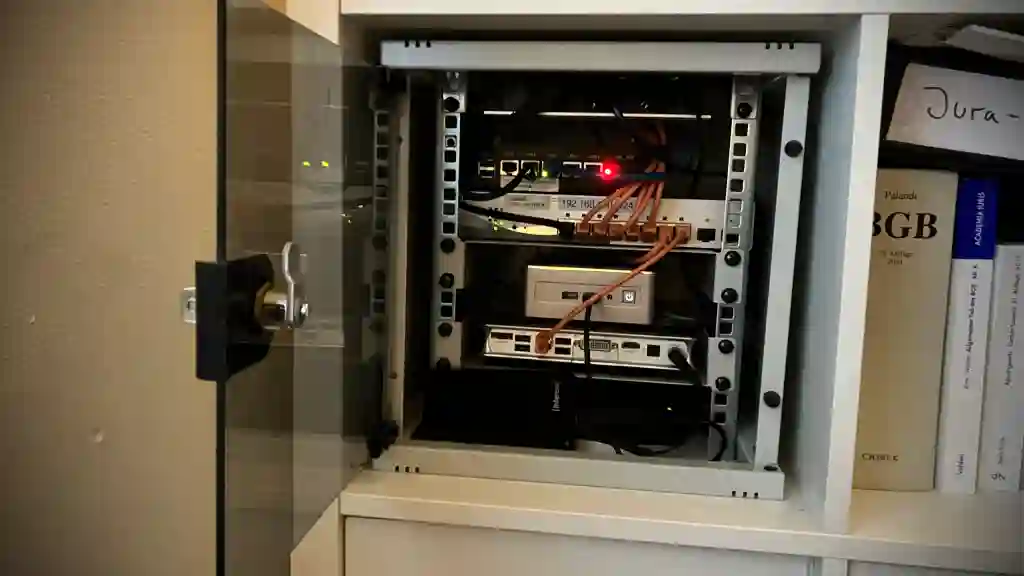
Through a reverse VPN, the individual hosts in my home office are connected to a rented root server at an ISP, making them publicly accessible (e.g. cloud.jakobs.systems). It’s called reverse VPN because the servers themselves initiate the connection to the reverse proxy10 not the clients.
Only my GNU/Linux mail server and my video conferencing server (running BigBlueButton11) are hosted externally on additional rented root servers. Naturally, they’re located in Germany, operated by an European ISP.
For network security, I use ipfire.org12 as a firewall and segmentation gateway. It runs Suricata13 as IDS/IPS14 and Monit15 for certificate monitoring.16 Everything sits in a dedicated network segment behind a FritzBox that provides Wi-Fi for the rest of the family.
A dedicated host handles remote logging and monitoring using rsyslog17 and Prometheus18. My Grafana dashboards are already introduced in an earlier blog post.19
Video Conferencing
Video conferences and “live sessions” have been part of my daily routine long before the COVID lockdowns. Sometimes I get feedback like:
Mr. Jakobs, why do your video conferences always look so professional?
Which tells me I’m not doing this entirely wrong. I usually reply diplomatically with “No idea.” I value good lighting and a quality headset. Two simple LED studio lamps provide solid illumination. For audio, I rely on an Arctis Pro Wireless,20 with a hardware mute button right on the headset.
I’ve been working remotely since the mid-2000s. Even back then, I experimented with multiple cameras, as shown in this 2007 shot of my workspace (notice the black spheres on the monitors):
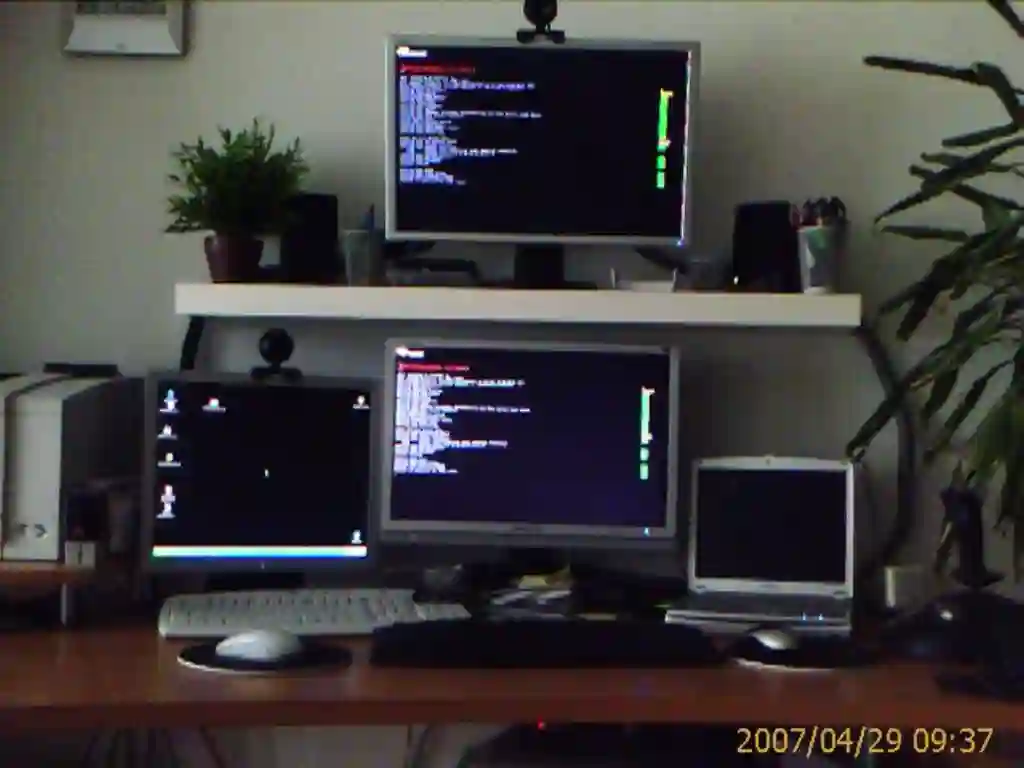
Even then, I strictly separated a dedicated conference PC from my mobile daily driver. It’s a principle I’ve stayed loyal to. Comparing the images, the fundamental layout and structure haven’t changed that much.
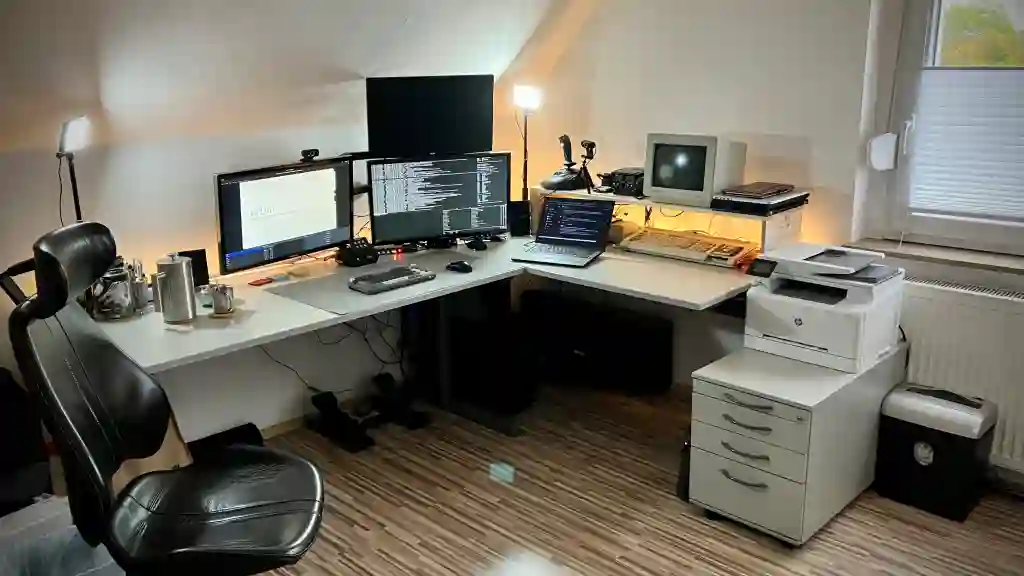
What has changed dramatically over the past 18 years is my video and streaming tech stack:
- OBS Studio for directing and scene management
- Streamdeck for scene switching
- Owncast for live streaming
OBS Studio21 forms the core of my video conferencing setup. I’ve prepared multiple scenes there (e.g. “Welcome” or “Break”). Using retro filters, I deliberately introduce distortions so no one thinks the video feed is frozen. Scene switching is handled by a Streamdeck, whose programmable buttons I configure with the free StreamController software.22
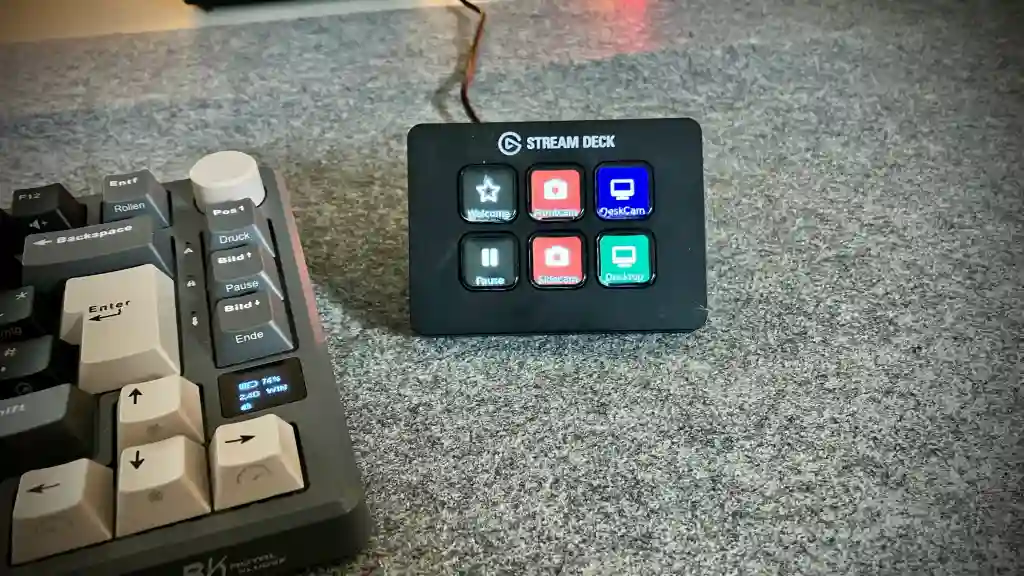
For presentations, I sometimes use a generic HDMI splitter and an Elgato CamLink USB adapter, which feeds any HDMI source into my OBS.
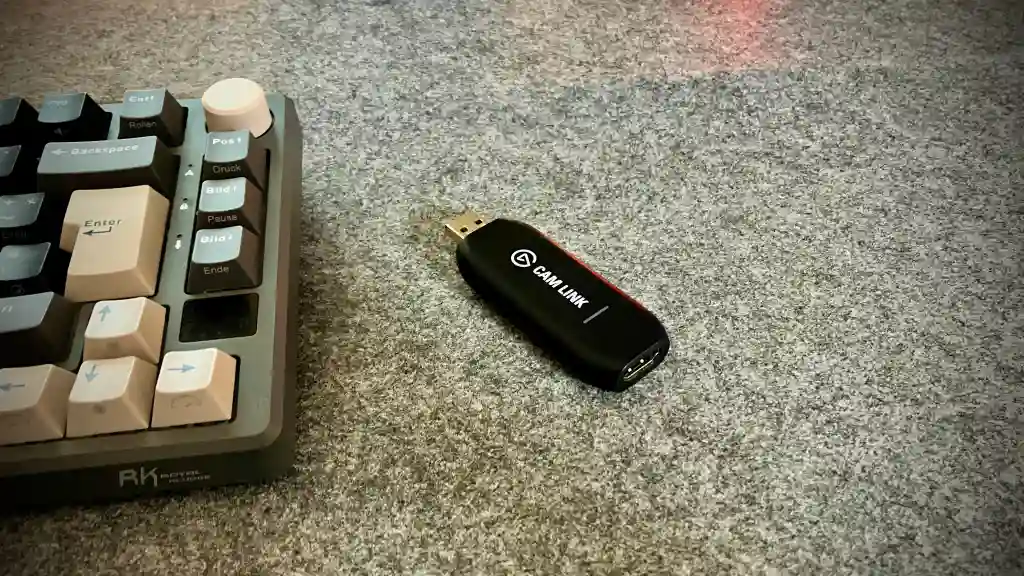
For live streaming directly on my blog,23 I use the open-source software Owncast,24 which I customized for my needs. During the COVID lockdowns, I hosted numerous “live sessions” this way.25
Conclusion
My home office isn’t “off the shelf.” It’s pragmatic, integrated, robust, and has evolved over decades. Much of it is automated with minimal administrative overhead. Everything I use, I do understand, I can modify and if necessary, I can replace or repair myself.
This is true luxury and real freedom in an increasingly closed digital world full of dependencies, planned obsolescence,26 and a lack of flexibility.
I’m convinced that what I can do isn’t special and every company should be able to do the same.
Feel free to reach out.
I’m always happy to help.
Best regards,
Tomas Jakobs
Update
There are still people who feel obligated telling me that the printer is from HP, the Sidewinder Force Feedback is from Microsoft, and there is a Macbook Pro in sight.
Yes, the picture does indeed show hardware from different manufacturers, gathered over several decades. Anyone who only looks for logos has obviously overlooked or misunderstood the content.